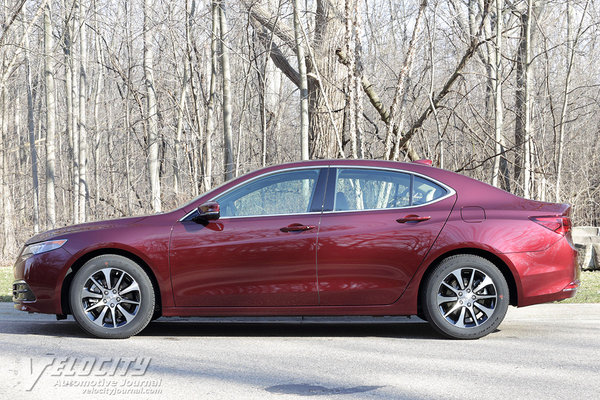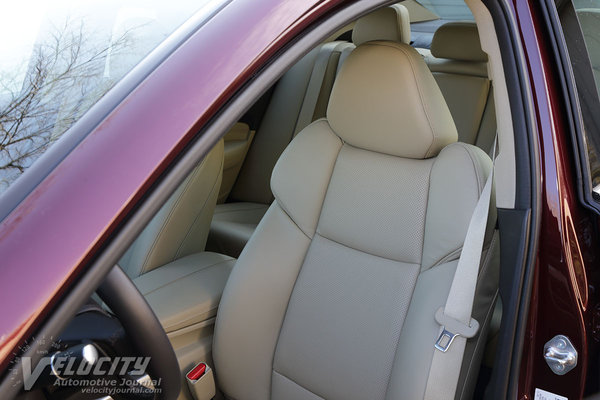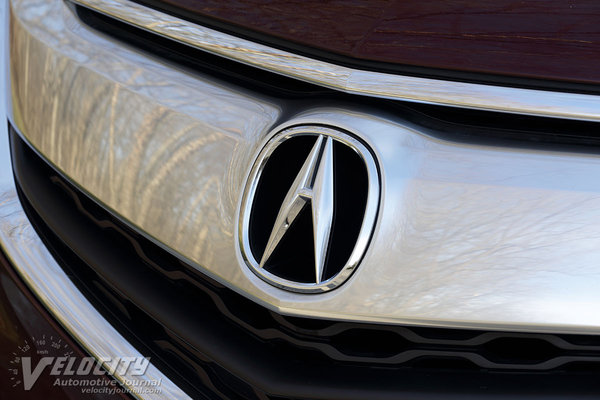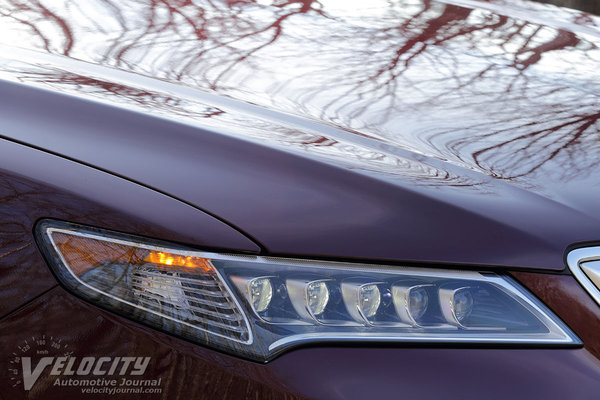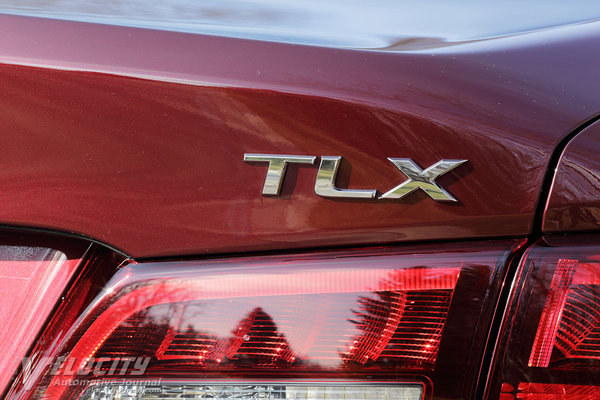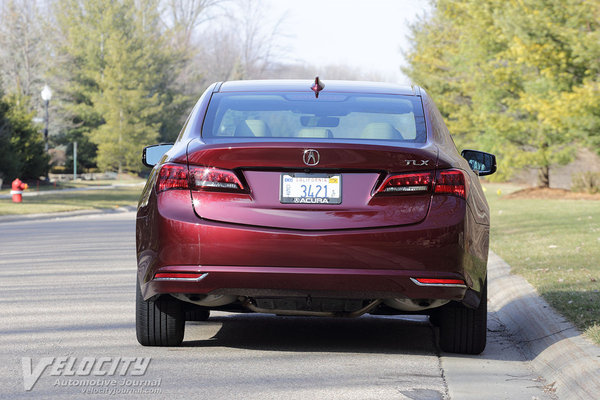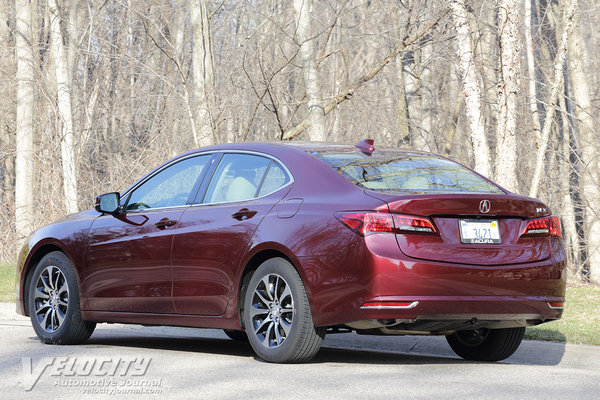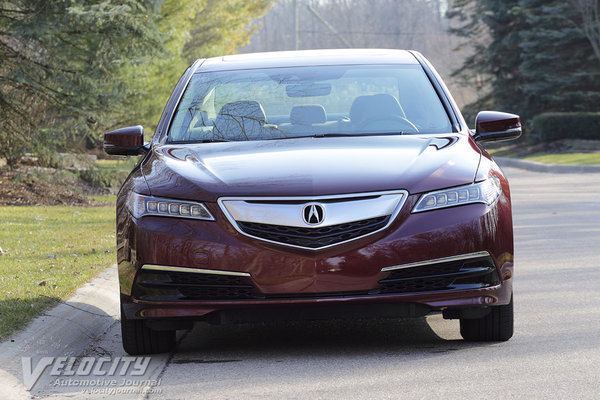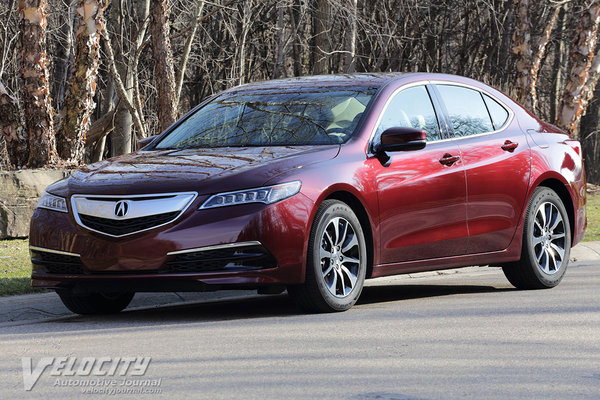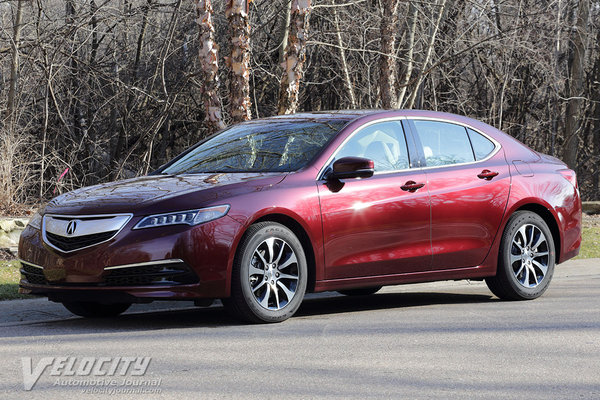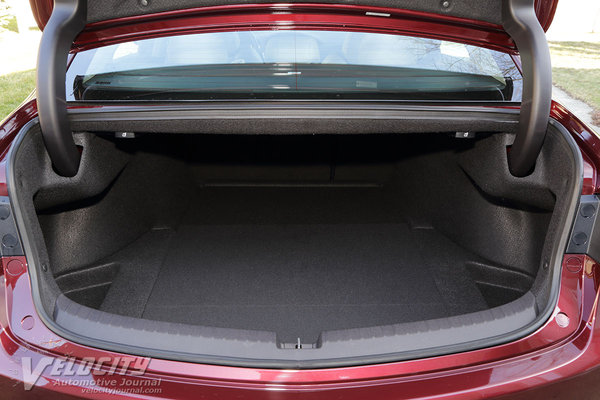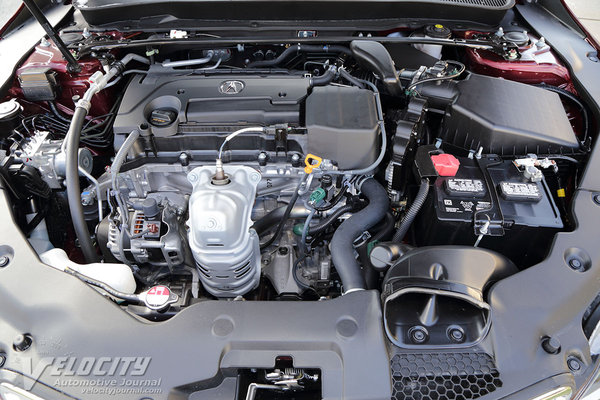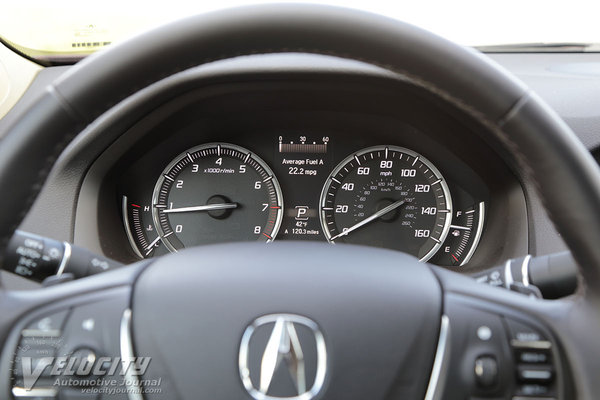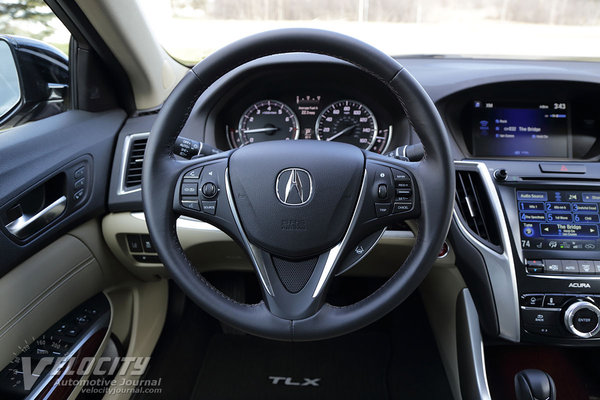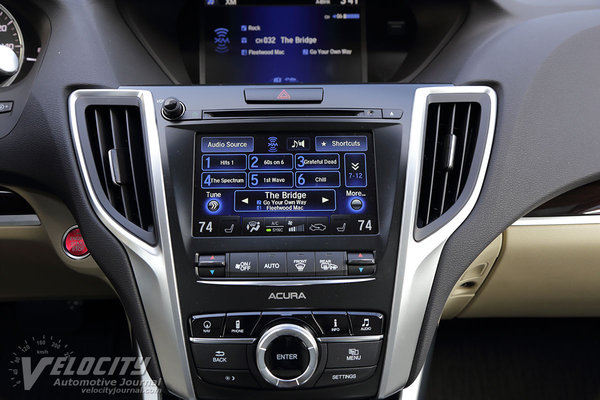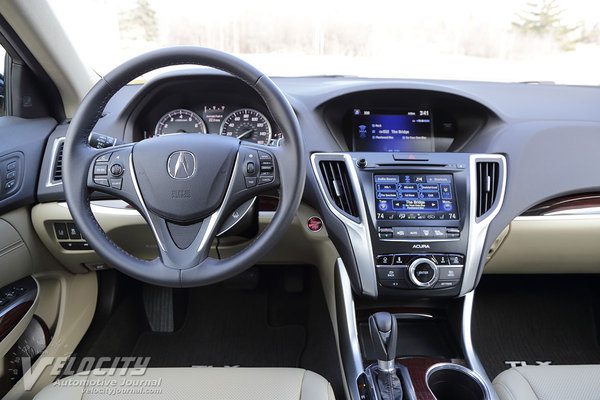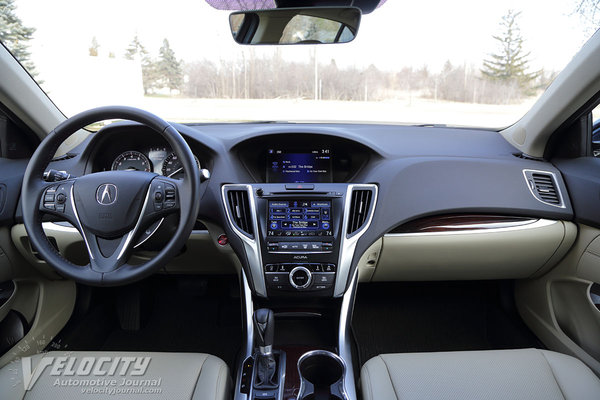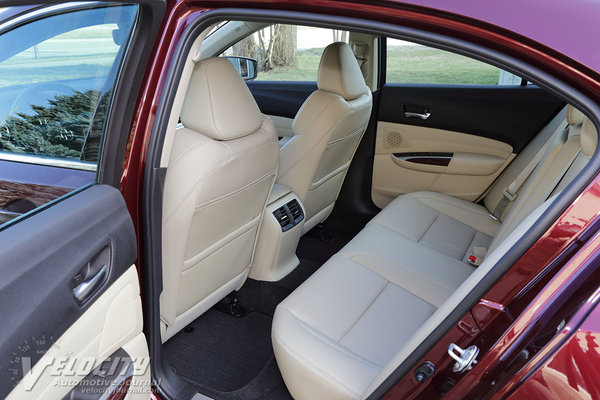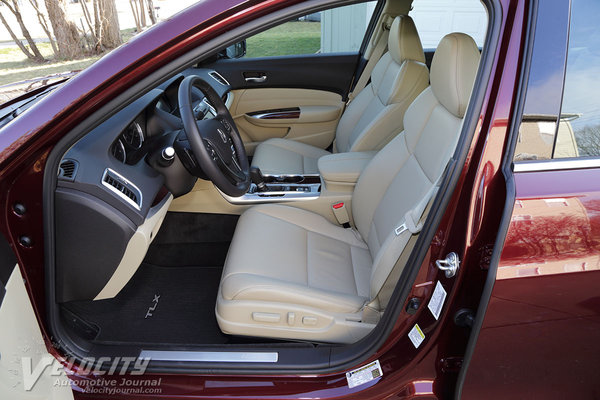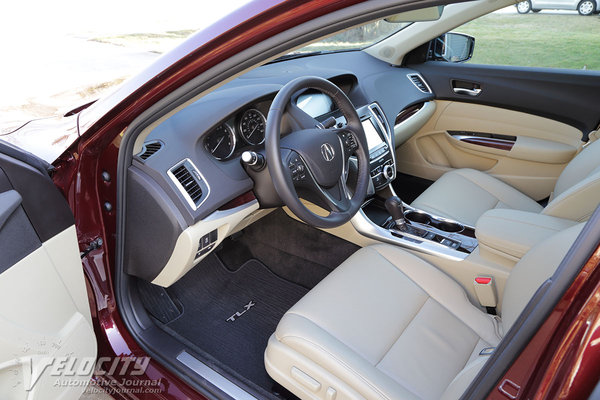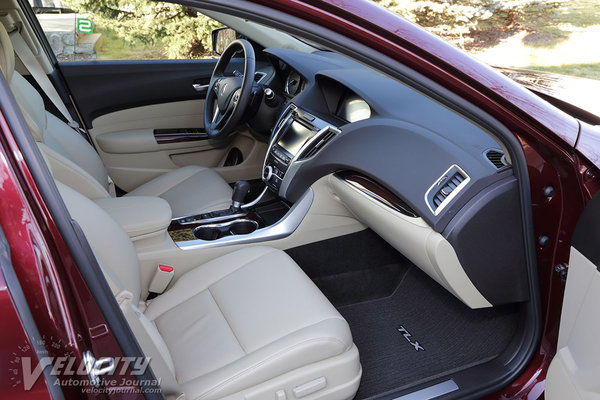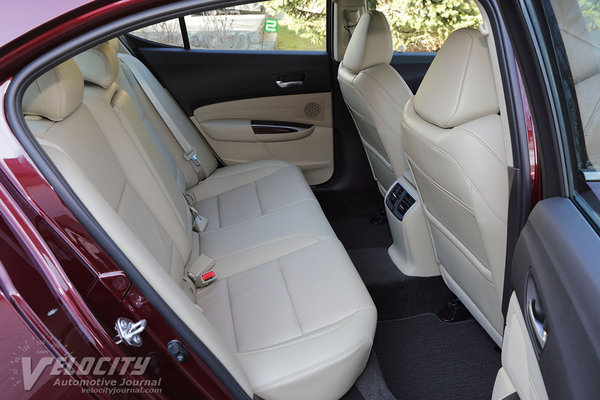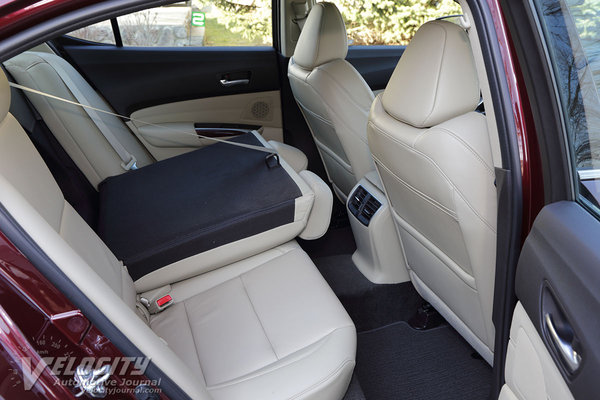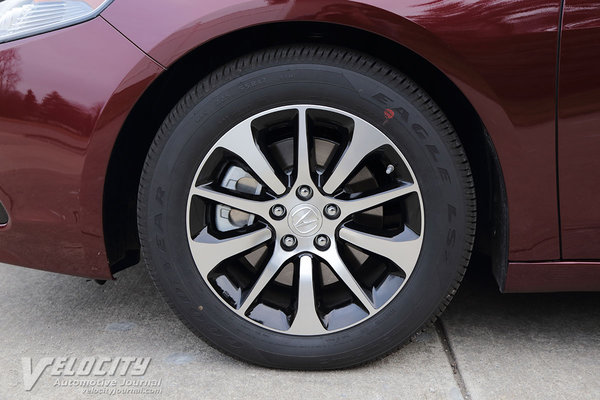2016 Acura TLX
03/15/2016
Shahed Hussain
Acura's TLX replaces the TSX and TL midsize sedans, slotting in size between the two previous models. Compared to the previous TL, the TLX shares the same 109.3-in. wheelbase, but is 3.7 in. shorter, 1.0 in. narrower, and just 0.2 in. lower. Acura has positioned the TLX to take on a wide range of competitors in the entry luxury segment, such as the Lexus IS, BMW 320i and Audi A4. Of these sedans, only the A4 is a direct rival, since the IS and 320i are based on rear-drive platforms (with optional AWD). A more appropriate competitive set includes the Lexus ES, Lincoln MKZ, and Nissan Maxima. Like the MKZ and A4, the TLX is available in FWD and AWD variants.
To retain both TSX and TL customers, an array of seven TLX models starting at $31,695 (TLX 2.4 8-DCT P-AWS) and ranging up $44,800 (TLX 3.5 V-6 9-AT SH-AWD with Advance Package) are available. As with the previous TSX, the TLX is powered by a choice of a 2.4L inline-4 or a 3.5L V-6. New transmissions include an 8-speed dual-clutch automatic mated to the inline-4, and a 9-speed automatic coupled to the V-6. Our test vehicle was a TLX 2.4 8-DCT P-AWS with Technology Package ($35,750). Adding the $940 destination and handling charge raised the MSRP to $36,690. The Technology Package includes a suite of safety and convenience features such as navigation, Milano leather seat trim, Acura/ELS 490-watt 10-speaker audio system, Forward Collision Warning System, Lane Departure Warning, Lane Keeping Assist System, Blind Spot Information System, and Rear Cross Traffic Monitor.
LED headlights have rapidly spread across the automotive spectrum, and are no longer confined to expensive European sedans. Acura and Honda have adopted LED headlights across most of the lineup faster than any other manufacturer. The TSX uses a 5-headlight array with three lamps for low beam and the remaining two lights dedicated to the high beam function. We were impressed by the exceptionally bright and even beam pattern at night that surpasses most HID headlight systems. Considering that LED headlights are standard on the Toyota Corolla and the new Civic, it's refreshing to see advanced lighting technology available to nearly everyone.
Acura's interior design strikes a balance between sport and luxury elements. Dark gray and beige interior panels are accented with metal accents and deep brown Zebra wood trim. A leather-wrapped steering wheel includes integrated audio, phone, and cruise controls. Beneath the right spoke is button to engage or disengage the Lane Keeping Assist safety feature. Paddles behind the steering wheel allow manual shift control. Analog gauges consist of an 8,000 RPM tachometer next to a 160-MPH speedometer. Both are flanked by a coolant temperature and fuel level gauges. A central trip computer displays fuel consumption, exterior temperature, gear indicator and other vehicle data. The infotainment system is controlled via touchscreen except for the audio volume knob; additional buttons and a central knob allow direct access to frequently used settings. The climate control adjustments are via buttons below the touchscreen. A USB and a 12V outlet are concealed in the center console under the storage bin.
The front seats provide decent lateral support, but are not heavily bolstered to accommodate a wide range of occupants. Perforated leather upholstery ensures comfort in hot weather, and heated seats (controlled via the console touchscreen) keeps front passengers warm in cold climates. The driver's seat has 10-way adjustability and power lumbar support, but the front passenger is limited to a 4-way power seat. The TLX V-6 upgrades the front passenger seat to 8-way power adjustments along with optional ventilated front seats. Rear passengers also benefit from decent legroom and headroom, but we noted that longer-legged passengers may find the seat cushions shorter than desired.
The direct-injected 2.4L inline-4 in the TLX is a significantly upgraded variant of the engine in the Honda Accord. The TLX engine gets dual overhead cams (DOHC), variable valve-timing (i-VTEC) and a slightly higher compression ratio (11.6:1) resulting in 206-bhp @ 6,800 RPM and 182 lb.-ft. @ 4,500 RPM. The optional port-injected single overhead-cam V-6 is rated at 290-bhp @ 6,200 RPM and 267 lb.-ft. @ 4,500 RPM. Both powerplants require premium unleaded fuel. According to the EPA, the 2.4L gets 24/35 MPG (city/hwy.). Surprisingly, the V-6 is not far behind with 21/34 MPG (city/hwy.) rating in the FWD TLX, but loses 3 MPG on the highway with the AWD powertrain.
Most other entry luxury sedans have adopted 7 and 8-speed torque converter automatics, but Acura chose the unusual combination of a torque converter coupled to an 8-speed dual-clutch automatic gearbox. The torque converter is mostly successful in masking the abrupt gearshifts that often occur with dual-clutch transmissions, but occasional light throttle gearshifts were not as seamless as expected. Shifting via the steering wheel-mounted paddles, the dual-clutch gearbox matches the responsiveness of a manual gearbox but the computer-controlled shifts are much faster. Amazingly, fifth (0.96:1) through eighth (0.48:1) are overdrive gears running to a 4.57:1 final drive ratio. For the V-6, a class-leading 9-speed automatic ensures maximum fuel efficiency; sixth (0.81:1) through ninth (0.48:1) are overdrive ratios coupled to a 3.52:1 final drive.
The TLX uses MacPherson struts in the front and multi-link setup with coil springs and dampers at the rear. Stabilizer bars are at both ends. Steering is electrically-assisted rack-and-pinion with 2.61 turns lock-to-lock (2.4L models). An all-wheel steer system (P-AWS) enhances handling and stability by electrically adjusting toe-in and in-phase and out-of-phase rear wheel steering automatically. Agile Handling Assist (AHA) individually applies the brakes to reduce understeer and reduce steering input. TLX V-6 models benefit from Super Handling All-Wheel Drive (SH-AWD) which vectors torque to each rear wheel to minimize understeer. ABS and Vehicle Stability Assist (VSA) work through 12.6-in. diameter ventilated front discs, accompanied by 12.2-in. diameter solid rear discs on all TLX models. Goodyear Eagle LS2 225/55R17 all-season tires, mounted on 17-in. diameter alloy wheels are standard on 4-cylinder TLX models. Larger diameter 18-in. alloy wheels with 225/50R18 Goodyear or Bridgestone Potenza tires are available with the TLX V-6. Curb weight ranges from 3,483 lbs. (TLX) to 3,748 lbs. (TLX V-6 SH-AWD).
Driving enthusiasts may prefer the 3.5L V-6, but the standard inline-4 endows the TLX with more than adequate performance. The lower curb weight of the base TLX combined with the short final drive ratio ensures that the 2.4L jumps of the line faster than expected. Peak torque output is on par with other engines in its class, but Acura's i-VTEC variable timing boosts torque and throttle response at low speeds. Even so, throttle response is markedly better above 3,000 RPM and continues to the 6,900 RPM redline. Large displacement fours often suffer from boom and buzz and revs rise, but Acura tuned the 2.4L to zing up to redline without protest. We averaged about 23 MPG in mostly urban driving, nearly identical to the 24 MPG city fuel economy rating. We would expect improved fuel consumption in climates milder than Detroit in winter.
Acura has positioned the TLX as a sport sedan, so we expected firm damping and sharp handling. The reality is that the TLX chassis engineers aimed for relaxed highway cruising and compliance over potholed urban roads. Acura's selection of the touring-oriented Eagle LS2 tires indicates that ride quality is greater priority than ultimate grip. Even so, the chassis does an excellent job of minimizing body roll as cornering loads increase. The lighter inline-4 powertrain minimizes understeer by placing less weight over the front wheels than the V-6. Steering turn-in response is aided by the torque-vectoring SH-AWD system. The electrically-assisted steering is accurate, but sends minimal feedback of road surface textures. Moderate steering effort aids stability on patched highways. As noted above, ride comfort is superb, as the TLX chassis absorbs the potholes and lumpy surfaces of the roads near metro Detroit. Road and wind noise are appropriately hushed at highway speeds, while the tall overdrive gearing and careful tuning ensures that the inline-4 approaches V-6 levels of refinement.
The TLX has simplified Acura's sedan lineup while catering to the needs of both TSX and TL customers. Simultaneously balancing sporty handling and ride comfort, the TLX should be on the shopping list for anyone considering an entry luxury sedan. Power-hungry enthusiasts may prefer the Accord Touring V-6 as a slightly less expensive alternative, but TLX sets itself apart with safety, chassis and powertrain technology unavailable in the Accord.

